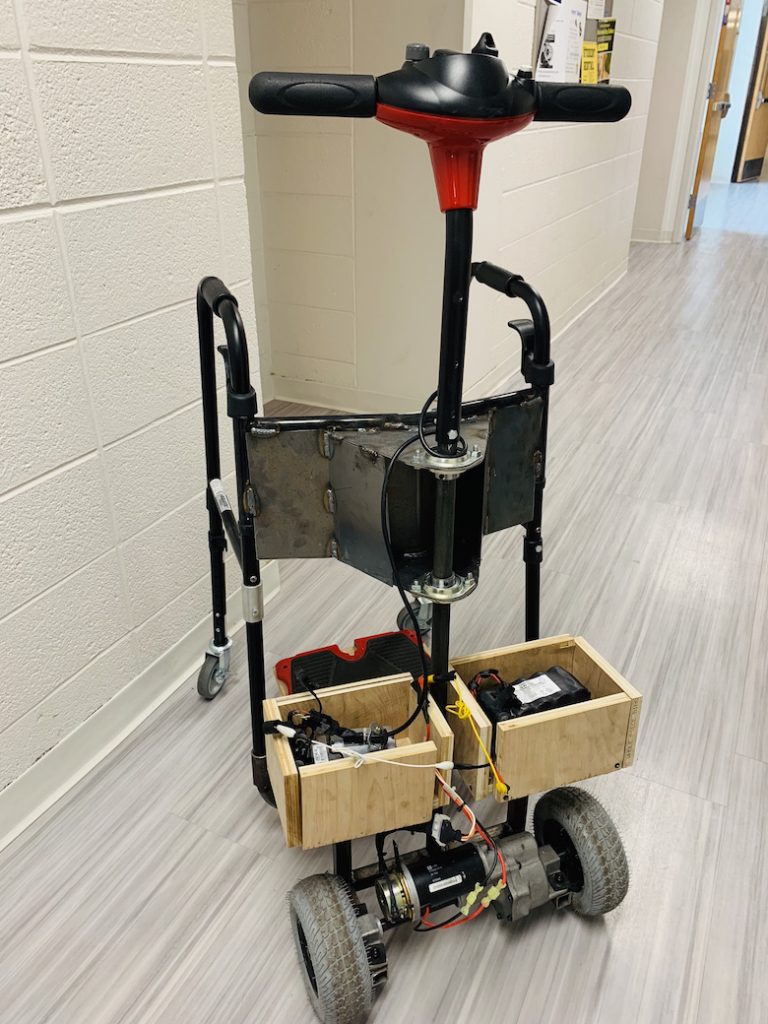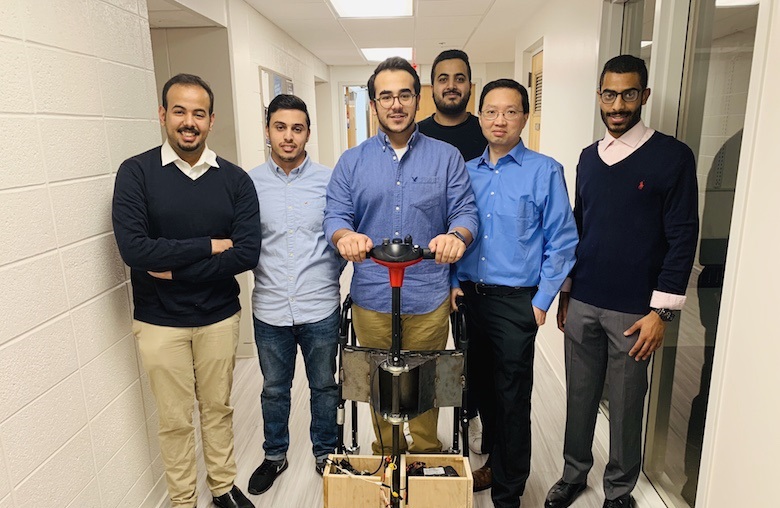In honor of Engineering Week 2019, News@Wilkes looks at one of the senior projects tackled by engineering students.
Watch out for the traffic in the hallway near Room 248 in Stark Learning Center. It’s where a group of senior mechanical engineering students are test driving their senior project.
The team, under the direction of their senior project advisor, Yong Zhu, assistant professor of mechanical engineering, have designed a motorized walker that moves down the hallway at a brisk clip. The team is led by student Mohammed Faydi and includes Abdulrahman Alajmi, Ahmad Alenezi, Abdullah Almarzouq, Hussain Almoddahi and Salah Alrasheedi.

The idea for the senior project came from a Wilkes alumna who teaches in a public school. She wondered if engineering students at her alma mater could come up with a solution to a challenge she faces on the job. Because she struggles with mobility issues, she needed a way to get from one end of her large school building to the other between classes. A conventional walker was far too slow. Could some Wilkes engineers develop a motorized version?
The request was ideal for senior students, who are required to complete a project at the end of their studies as a final requirement to complete their degrees. All Wilkes engineering students, regardless of major, complete a senior project. “A problem coming from real life is always a better project for students,” Zhu said. “Anything meaningful is coming out of real life.”
The Wilkes team rose to the challenge and are now testing and fine-tuning their second prototype. The device is reminiscent of a Segway. But unlike that gizmo, which requires some balancing on the part of users, the motorized walker is a stable device that is less likely to tip over. An individual using it climbs on to a small platform and uses handlebars to steer. The first prototype, completed by the end of the fall 2018 semester, needed better steering capability. Now the second version boasts a responsive steering function that had team leader Faydi backing up and then motoring out the door of Room 248 to demonstrate the device while his smiling team members looked on. He took it on a run and up and down the corridor, smoothly negotiating turns.
The group agreed that the key to their success in developing their project was teamwork.

“It took a long time, especially at the beginning. By dividing the work, we made it equal among the members of the group,” said Hussain Almoddahi. “We are all mechanical engineers, but dividing it used the different skills of the members.”
The learning process includes a period of trial and error. The emphasis is not just on the final product, but the process followed by engineering students to arrive at the solutions, Zhu stated. “You can fail on a project and still learn a lot,” Zhu explained. “My approach is not the result, but how you actually got there.”
The students praised Zhu for his guidance. “We picked a great advisor,” Faydi said.
Although the team has made great progress on the prototype, there will be more work before engineering students present their final projects in April. Some of the time will be spent polishing the motorized walker’s appearance to give it the more professional look found in business. The device is still years away from becoming a product because the Food and Drug Administration must approve all devices with a medical purpose. For now, the Wilkes students have taken an important first step in their engineering careers.
